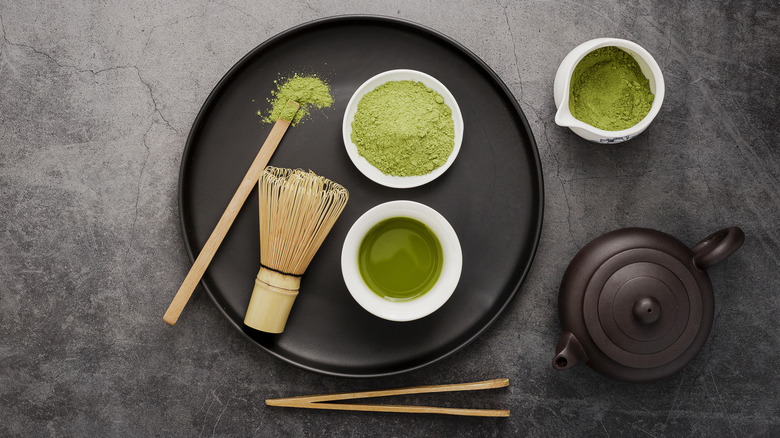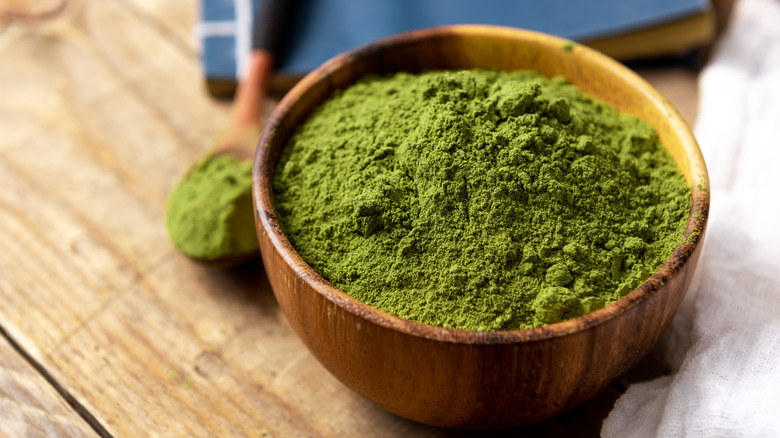2 Red Flags You Should Avoid When Buying Matcha
Shopping for matcha is anything but a one size fits all approach. Come to think of it, it's not even a two-sized one. If you've browsed around at all, you've likely come across matcha powders distinguished between two different categories: ceremonial grade and culinary grade. Generally speaking, ceremonial grade matcha is considered to be of finer quality, indicative of its historical use in Japanese tea drinking ceremonies. Culinary grade, on the other hand, is thought to be of lesser quality, intended for use in baking and cooking recipes and not for your tea. But the truth is, these classifications don't exist in Japan.
The truth is, good and bad matcha powders can be found within both of these categories — and just because a matcha is labeled as ceremonial doesn't mean it's going to make a good latte. Instead, Jee Choe, the coffee and tea sommelier and founder of Oh, How Civilized, recommends considering the price and source of the matcha instead. When asked about common matcha mistakes, Choe told Tasting Table, "One [common mistake] is purchasing a low quality matcha, which results in a brown/tan colored drink.
Choe also explained, "Getting matcha that's not made in Japan or one that's under $15 a tin will create a subpar drink." Producing matcha powder is a time honored craft involving many different steps and processes that, inevitably, add up to its price. While steps vary from powder to powder, they will be reflected in the overall quality and price of the matcha.
When it comes to matcha, you get what you pay for
First and foremost, all matcha goes through a period of shading — a step that is directly conducive to its bright green color and high amounts of L-Theanine, but one that also reduces the plant's yield, which only makes it more expensive. The tea leaves are then plucked, de-stemmed, and de-veined by hand before being sorted by age and, finally, ground by hand again in a stone-mill.
During the sorting period, younger leaves with the most chlorophyll and greenest color are reserved for the higher and more expensive grades of matcha. Similarly, the lower and slower that the matcha is ground produces a finer consistency while preserving all of its valuable nutrients — and time is money, as we all know. These are just a couple of examples of what goes into the quality and cost of the matcha you buy.
All of these steps can vary depending on the brand, the variety, and the region in which it is grown. Given that Japan, and specifically Uji, Japan, is considered the birthplace of matcha with the longest history of cultivation and strictest agricultural laws, there's really no better place to get your matcha from. Of course, it also happens to be on the other side of the world, which also adds to the cost. But it's all worth it when you take that first, clump-free sip — that is, as long as you use your bamboo whisk.

